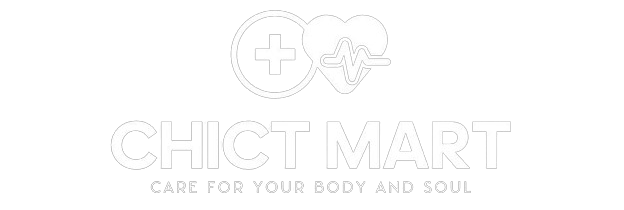
Have you ever seen someone with strange circular marks on their skin and wondered what they were? Chances are, you have encountered the aftermath of cupping therapy. These distinctive marks, often purplish or reddish in color, are a telltale sign of this ancient healing practice. But if you’re considering trying cupping or have just had your first session, you might be wondering: how long do these cupping marks actually last?
In this comprehensive guide, we will dive deep into the world of cupping marks, exploring their origins, duration, and everything in between. Whether you’re a cupping newbie or a seasoned enthusiast, this article will provide you with all the information you need about the lifespan of cupping marks.
Cupping Marks: What Are They?
Before we delve into how long cupping marks last, it’s crucial to understand what they are and why they appear. Cupping marks are the visible result of a therapeutic technique that uses suction to pull skin and superficial muscle into specially designed cups. These marks are not bruises in the traditional sense, but rather a form of therapeutic petechiae tiny, painless bleeds under the skin.
The Science Behind Cupping Therapy
Cupping therapy works on the principle of creating negative pressure on the skin’s surface. This suction effect is believed to increase blood flow to the area, which can help relieve muscle tension, promote cell repair, and aid in the removal of toxins. The marks left behind are a good sign they indicate that the treatment is working to bring blood to the surface and promote healing.
Why Cupping Marks Appear
Cupping marks appear due to the breaking of capillaries just beneath the skin’s surface. When the cup is applied and suction is created, it causes these tiny blood vessels to rupture, resulting in the characteristic circular marks. The color and intensity of these marks can vary depending on several factors, which we will explore next.
Factors Affecting How Long Cupping Marks Take

Now that we understand what cupping marks are, explore the factors that influence how long they last. The duration of cupping marks can vary significantly from person to person and even from session to session. Here are the key factors that play a role:
Intensity of the Cupping Session
The strength of the suction and the length of time the cups are left on the skin have a direct impact on the intensity and duration of the marks. A light cupping session might leave marks that fade within a few days, while a more intense treatment could result in marks lasting up to two weeks or more.
Individual Skin Characteristics
Your body’s unique characteristics greatly affect how long cupping marks stick around. Factors such as:
- Skin type (fair skin often shows marks more prominently)
- Age (younger skin tends to heal faster)
- Overall health and circulation
- Hydration levels All contribute to the duration of cupping marks. People with more sensitive skin or slower healing processes may find that their cupping marks last longer.
Body Area Treated
Interestingly, the location of the cupping treatment on your body can affect how long the marks last. Areas with more body fat or muscle, like the back or thighs, tend to show marks for longer periods compared to bonier areas like the arms or neck. This is because areas with more tissue can sustain a stronger suction, resulting in more pronounced marks.
How Long Do Cupping Marks Last?
While individual experiences may vary, you can expect a general timeline when it comes to cupping marks. Break it down into stages:
Immediate Aftermath (0-24 Hours)
Right after your cupping session, the marks will be at their most vibrant. They might look alarming deep red, purple, or even black in color. Don’t panic! This indicates that the treatment is having the desired effect and is entirely normal. The area might feel slightly tender or sensitive to touch, but this sensation typically subsides quickly.
Short-Term Effects (2-4 Days)
In the days following your treatment, the cupping marks will reach their peak coloration. They might darken slightly before beginning to fade. You might notice the edges of the marks starting to lighten first. During this period, any initial tenderness should have completely disappeared.
Medium-Term Persistence (5-10 Days)
For most people, cupping marks start to noticeably fade around the 5-day mark. By day 10, many will find that their marks have significantly lightened or disappeared entirely. The once vibrant circles will gradually become lighter and less defined, often taking on a brownish or yellowish hue as they fade.
Variations in Healing Time
It’s important to note that some people might see their cupping marks fade within 3-4 days, while others might have visible marks for up to 3 weeks. Don’t be alarmed if your healing timeline doesn’t match what you’ve read or heard from others – everyone’s body responds differently!
Factors like your overall health, the intensity of the treatment, and how frequently you receive cupping therapy can all influence how quickly your marks fade. Regular cupping sessions might lead to faster fading times as your body becomes accustomed to the treatment.
How does cupping feel?
Traditional Chinese medicine views cupping as a method to stimulate the flow of qi, or energy, in the body. When undergoing cupping therapy session, the sensation can vary depending on the technique used. Dry cupping, for example, involves placing glass cups on the skin and creating a vacuum to lift the skin up into the cup. This may feel like a tight pressure on the surface of the skin. The cups can last anywhere from a few minutes to twenty minutes. Once the cups are removed, there may be marks from cupping that resemble bruises, but they typically go away within a few days.
These marks are not actually bruises, but rather the result of blood and qi stagnation being brought to the skin up into the cup. The pressure from the cups helps to release this stagnation and promote the flow of energy throughout the body. Some people find the sensation of cupping to be relaxing, while others may find it uncomfortable. The therapist will determine how long the cups should be left in place based on the individual’s needs. Overall, cupping gives your body a unique sensation that can be effective for pain management and promoting overall well-being.
Speeding Up the Healing Process
If you’re eager to accelerate the fading of your cupping marks, there are several steps you can take to support your body’s natural healing process:
Hydration and Nutrition
Drinking plenty of water helps flush toxins from your system and promotes overall skin health. Staying well-hydrated can potentially speed up the healing of cupping marks. Additionally, eating a balanced diet rich in vitamins C and K can support faster healing. Foods high in these vitamins include citrus fruits, leafy greens, and berries.
Gentle Exercise and Movement
Light exercise can boost circulation, which may help your body clear cupping marks more quickly. Think gentle yoga, walking, or swimming – nothing too strenuous that might irritate the treated areas. The increased blood flow from mild physical activity can aid in dispersing the stagnant blood that causes the marks.
Topical Treatments
Some people swear by topical treatments to speed up healing. While scientific evidence is limited, options like arnica gel or vitamin K cream might help reduce the appearance of marks. Always consult with your cupping practitioner before applying anything to cupping-treated skin to ensure it won’t interfere with the therapy’s benefits.
How to Get Rid of Cupping Marks
When it comes to getting rid of cupping marks, several techniques can be beneficial in reducing the appearance of these red marks. Cupping is a traditional Chinese therapy that involves creating suction on the skin to help with the flow of energy and blood, but it can leave behind cupping bruises that may last for a few days.
These marks indicate areas of stagnation in the body, and can be compared to a bruise in appearance. One method to help fade these marks is through massage, which can help to stimulate the lymphatic system and promote healing in the affected soft tissue. Another option is acupuncture, which can help to balance the meridian pathways in the body and encourage the flow of energy.
Using a glide technique when performing cupping can also help to reduce the intensity of the marks left behind after a session. Ultimately, the length of time that these marks are left on the skin can vary from person to person, and can be influenced by factors such as the intensity of the cupping session and the overall health of the individual.
When to Be Concerned About Cupping Marks

While cupping marks are generally harmless and temporary, there are rare instances when you should seek medical attention. It’s time to see a healthcare provider if you face any of the following:
- Severe pain or discomfort that persists beyond the initial treatment
- Marks that don’t fade after 3 weeks
- Signs of infection like fever, redness spreading beyond the cup marks, or pus
- Blistering or broken skin at the cupping sites
- Allergic reactions or unusual swelling
These symptoms could indicate an adverse reaction or improper application of the cupping technique. Concerning your health, it’s always best to walk on the side of care.
Rejecting False Information Regarding Cupping Marks
There are several misconceptions about cupping marks that need to be addressed:
- False: Darker marks mean more toxins were removed. Truth: The color of cupping marks is more related to blood flow and capillary breakage than toxin removal.
- False: Cupping marks are bruises. Truth: While they may look similar, cupping marks are a form of petechiae, not true bruising.
- False: Cupping marks should be painful. Truth: While some tenderness is normal, severe pain is not typical and could indicate a problem.
- False: The longer the marks last, the more effective the treatment. Truth: The duration of marks doesn’t necessarily correlate with the effectiveness of the therapy.
Understanding these truths can help you approach cupping therapy with realistic expectations and a better understanding of what’s happening to your body.
Benefits of Cupping Beyond the Marks
While we’ve focused primarily on the marks left by cupping, it’s important to remember that these temporary discolorations are just a side effect of a therapy that offers numerous potential benefits:
- Pain relief, especially for chronic conditions
- Improved blood circulation
- Relaxation of tense muscles
- Potential boost to the immune system
- Promotion of overall well-being and relaxation
Many people find that the benefits of cupping therapy far outweigh any concerns about temporary marks on their skin.
Conclusion: Temporary Nature of Cupping Marks
How long do cupping marks last? As we’ve discovered, it’s not a one-size-fits-all answer. You can expect cupping marks to stick around for 5-10 days, but don’t be surprised if yours fade faster or linger a bit longer. Remember, these marks are a sign that your body is responding to the treatment and working on healing itself from the inside out.
Cupping marks are a temporary reminder of your body’s healing process. While they may seem alarming at first, understanding their nature and typical duration can help you approach cupping therapy with confidence. Embrace the process, listen to your body, and don’t hesitate to reach out to a qualified practitioner if you have any concerns.
Whether you’re a cupping enthusiast or a curious newcomer, the temporary nature of cupping marks shouldn’t deter you from exploring this ancient healing practice. With proper care and patience, you’ll likely find that the benefits of cupping therapy extend far beyond the visible marks on your skin.
FAQs
Can I cover up cupping marks with makeup?
It’s best to avoid applying makeup directly to cupping marks to prevent irritation and allow the skin to breathe and heal naturally.
Will cupping marks scar my skin?
When performed correctly by a trained professional, cupping should not cause scarring. The marks are temporary and typically fade completely.
Q: Can I get cupping therapy if I have sensitive skin?
People with sensitive skin can still benefit from cupping, but should inform their practitioner who may adjust the technique or intensity accordingly.
Do cupping marks itch as they heal?
Mild itching can occur as cupping marks heal, similar to how a bruise might itch. However, severe itching or discomfort is not normal and should be addressed.
Can I swim or go in a hot tub with cupping marks?
It’s generally advised to avoid swimming pools, hot tubs, or saunas for 24-48 hours after cupping to prevent irritation or infection.
Will cupping marks appear differently on darker skin tones?
Cupping marks can be less visible on darker skin tones but are still noticeable. The healing process is the same regardless of skin color.
Can cupping marks reappear after they’ve faded?
Once cupping marks have completely faded, they don’t typically reappear unless you have another cupping session.
Is it normal for cupping marks to be different sizes or intensities?
Yes, it’s common for cupping marks to vary in size and intensity even within the same treatment area, depending on factors like local circulation and tissue condition.





